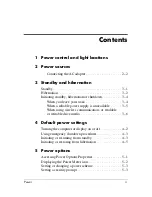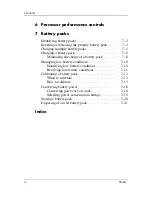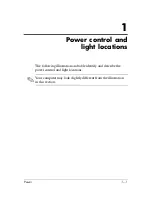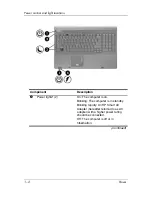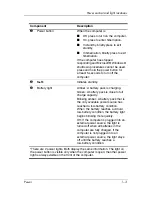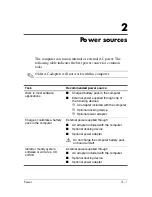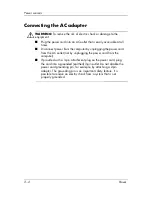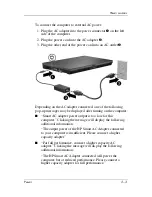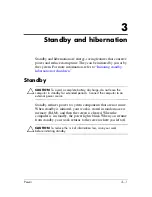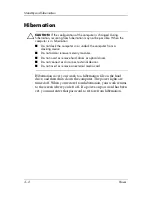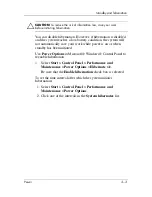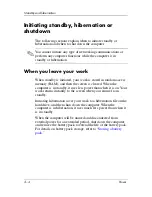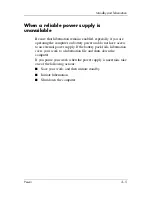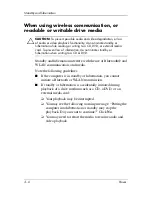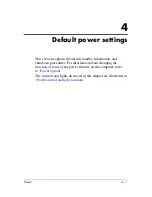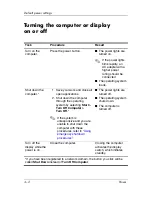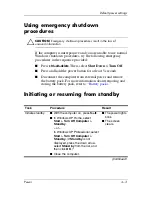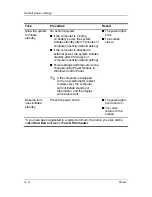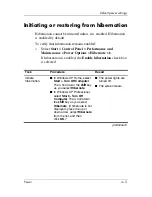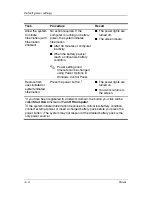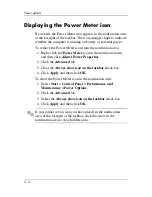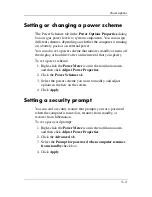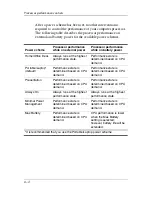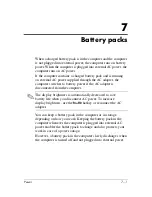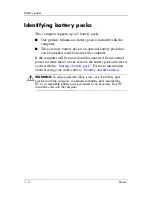
3–4
Power
Standby and hibernation
Initiating standby, hibernation or
shutdown
The following sections explain when to initiate standby or
hibernation and when to shut down the computer.
✎
You cannot initiate any type of networking communications or
perform any computer functions while the computer is in
standby or hibernation.
When you leave your work
When standby is initiated, your work is stored in random access
memory (RAM), and then the screen is cleared. When the
computer is in standby, it uses less power than when it is on. Your
work returns instantly to the screen when you resume from
standby.
Initiating hibernation saves your work to a hibernation file on the
hard drive, and then shuts down the computer. When the
computer is in hibernation, it uses much less power than when it
is in standby.
When the computer will be unused and disconnected from
external power for an extended period, shut down the computer
and remove the battery pack to extend the life of the battery pack.
For details on battery pack storage, refer to “
Storing a battery
pack
.”


